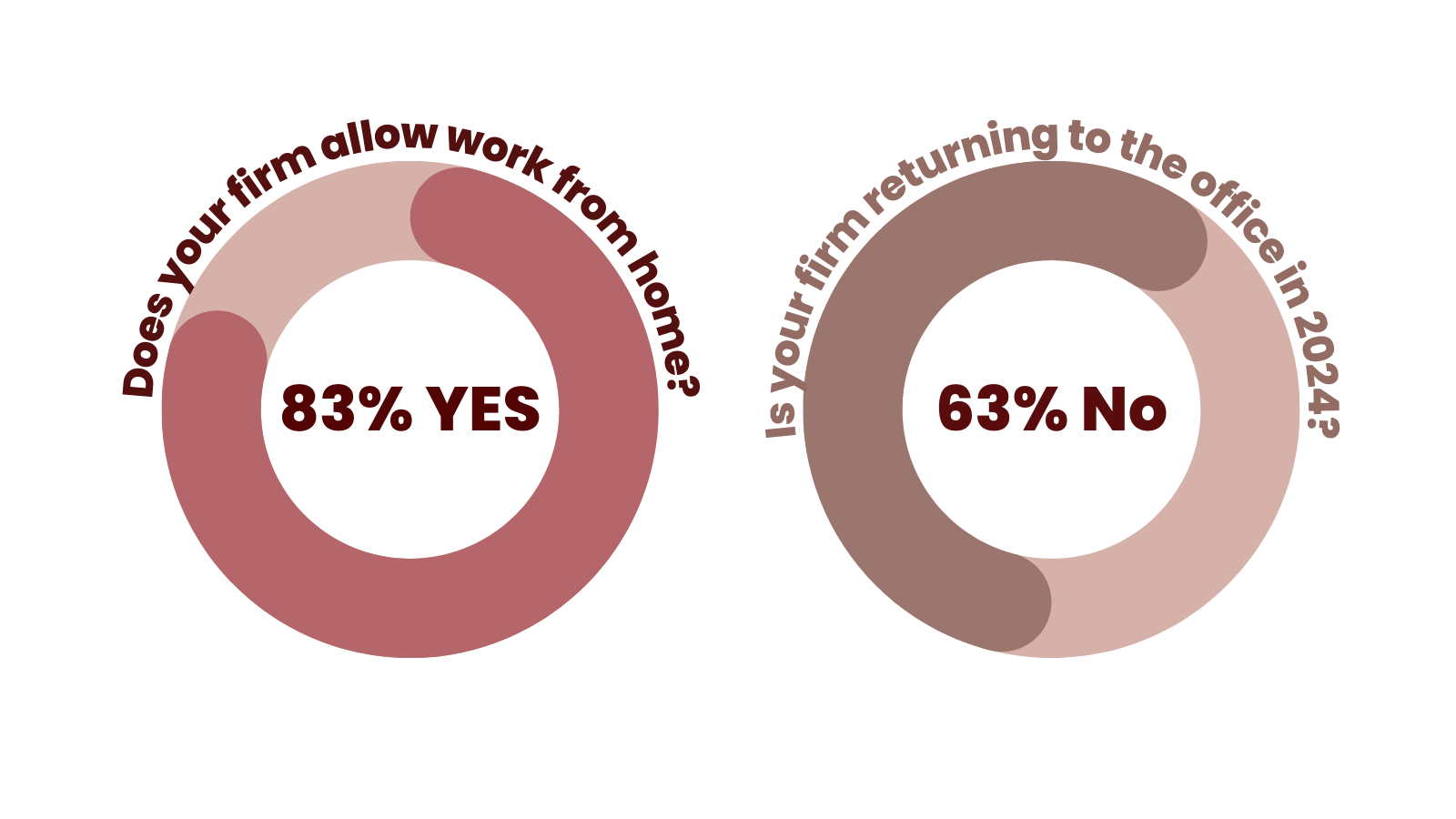
Training Strategies for Law Firms
In 2024 mastering legal technology isn't just advantageous — it's essential for staying ahead of the curve. However, simply acquiring the latest software or implementing new systems isn't enough. So, how can firms ensure they make the most of their software investments?
The answer lies in the foundation of good training.
Without a solid foundation, even the most sophisticated legal tech solutions can fall short of delivering their full potential. This is particularly relevant in light of recent shifts in the workplace. A recent survey revealed 87% of firms permit their employees to work remotely. While this statistic is not new, our survey also indicates this trend shows no signs of abating.

This highlights the critical need for legal professionals to possess not only technical skills, but also the adaptability to navigate virtual environments effectively, a competency that can be achieved with quality training.
What Does Good Training Look Like?
Good training goes beyond simply giving out information. It should foster a culture of continuous learning and innovation, encouraging individuals to explore new tools and methodologies independently and seek opportunities for professional growth. It should entail:
- Relevance to Job Role: For example, paralegals often handle case management tasks such as organizing documents, preparing legal forms, and managing deadlines. Training programs designed specifically for paralegals could focus on software platforms that perform these tasks. By addressing job-related tasks and challenges, training becomes directly applicable, enhancing its value and relevance.
- Interactive and Engaging Elements: Interactive elements such as case studies, role-playing exercises, and hands-on demonstrations engagement is key. According to a Harvard Business Review, 92% of executives believe that engaged employees drive higher company performance. By actively involving learners, training becomes more dynamic and memorable, leading to better retention and application of knowledge.
- Practical Application: Training should provide opportunities for participants to practice using legal tech tools in simulated or real-world scenarios. By integrating practical exercises, learners can develop confidence and proficiency in applying newly acquired skills in their daily workflow.
- Continuous Evaluation and Improvement: Quality training is not a one-time event but an ongoing process. It incorporates mechanisms for continuous evaluation and improvement based on feedback, performance metrics, and evolving technological advancements.
By implementing these principles, firms can ensure that their training programs are not only valuable and engaging but also directly contribute to improved job performance and overall organizational success.
Addressing Diminishing Returns in Training
While investing in training is essential for equipping legal professionals with the necessary skills to leverage legal technology effectively, it's important to also recognize the principle of diminishing returns. This principle suggests that as the investment in training increases beyond a certain point, the incremental benefits gained begin to decrease. Here's how firms can address this:
- Strategic Prioritization: Not all legal tech tools or skills are equally beneficial for every firm. Strategic prioritization involves identifying the most impactful areas for training investment based on organizational goals, workflow requirements, and industry trends. By focusing resources on high-priority areas, firms can maximize the return on their training investment.
- Tailored Content Delivery: Rather than adopting a one-size-fits-all approach, training should be tailored to the specific needs and proficiency levels of participants. By customizing content delivery methods, such as self-paced modules, workshops, or mentorship programs, firms can optimize the learning experience for individuals, maximizing their retention and application of knowledge.
- Continuous Reinforcement: This includes providing access to resources such as online tutorials, knowledge repositories, and peer support networks to reinforce learning and address skill gaps over time.
- Evaluation and Adaptation: Conduct a training assessment or quiz to measure learning outcomes and identify areas where additional support or reinforcement may be needed. By collecting feedback from participants, monitoring performance metrics, and benchmarking against industry standards, firms can iteratively refine their training programs to maintain relevance and efficacy.
This notion of a solid foundation becomes particularly significant when considering the challenge many firms face, particularly in retaining employees beyond the 3-year mark. By investing in robust training programs that not only provide essential skills but also offer pathways for advancement and professional development, firms can enhance employee engagement and retention.
Subscribe to our newsletter for exclusive tips, tricks, and updates on all things legal tech.
You may also like
Happy Holidays Message from David Swadden, CEO
December 18, 2025
We would like to wish all our clients and readers a wonderful holiday season filled with joy and laughter.
Tracument Holiday Schedule
December 11, 2025
We would like to update all our clients of our Holiday Schedule this holiday season!
Tracument Wrapped!
December 4, 2025
What 2025 Looked like for Tracument and for you!




